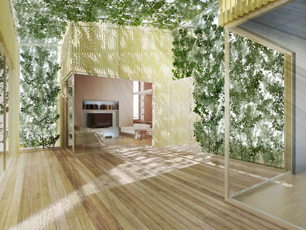The winner of the 2012 Solar Decathlon Europe won’t be announced until this weekend, but we’re reading about several designs that have emerged as top contenders at the green building competition in Madrid, Spain.
The contest – born out of the US Solar Decathlon, run by the Dept of Energy – is an international competition that challenges university students to design and build energy efficient homes. The objective is to build houses that minimize the use of natural resources, produce minimal waste during their life cycle, and emphasize reducing energy consumption and sourcing electricity from the sun.
The year’s challenge includes 20 homes built by students from 15 countries – 11 from Europe (Germany, Denmark, Spain, France, Hungary, Italy, The Netherlands, Norway, Portugal, The United Kingdom and Romania) and 4 from China, Japan, Brazil and Egypt.
Houses are judged on:
- Architecture
- Engineering and Construction
- Energy Efficiency
- Electrical Energy Balance
- Comfort Conditions
- Household Functions
- Communication and Social Awareness Activities
- Industrialization and Market Viability
- Innovation
- Sustainability
Here are three particularly intriguing designs.
Canopea House (France)
This design answers the question, How can a city combine life in a geographically limited area while providing individual comfort and being close to nature?
It offers a neighborhood of small buildings called "home towers" and is also leading on popular vote (visitors can vote for their favorite design). No building is taller than 10-stories and all apartments have 360 degree views.
Here’s a video presentation about the project:
Patio 2.12 (Spain)
Patio 2.12 is constructed with four pre-fabricated pavilions that surround an interior courtyard that uses triple-glazed windows – allowing heat to escape or to be trapped depending on the weather. It also includes a unique water-cooling system to keep the house cool without resource-intensive air conditioning.
The entire structure sits on a plinth, so it can be removed without leaving a footprint.

ECOLAR (Germany)
The ECOLAR house is also modular and can shrink or expand depending on the number of inhabitants. It uses three different kinds of vertical and rooftop solar panels to generate energy, using a reflecting pool to help improve generation efficiency.
The house was constructed with natural materials and is insulated with hemp.

For more on Solar Decathalon Europe:
